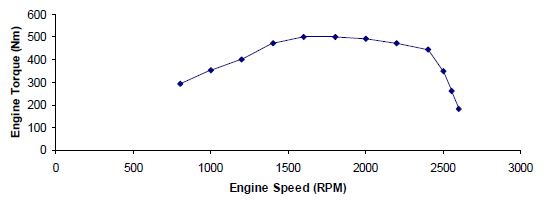Hi All,
I am analysis the performance of a Generac SD250 diesel engine ( Using info from the attached data sheet - including the hourly fuel consumption figures (l/hr) - I have managed to calculate and plot the engine efficiency and BSFC(g/kWhr).

What I would like to do is plot the BSFC against engine speed; however, I don't think there is enough information in the data sheet to obtain the torque vs speed characteristic of the engine. They only give the rated engine speed 1800 rpm. Any ideas on how I can find / infer this information for the diesel engine in question? What I am looking for is a plot such as the following:

Thanks
Ben
I am analysis the performance of a Generac SD250 diesel engine ( Using info from the attached data sheet - including the hourly fuel consumption figures (l/hr) - I have managed to calculate and plot the engine efficiency and BSFC(g/kWhr).

What I would like to do is plot the BSFC against engine speed; however, I don't think there is enough information in the data sheet to obtain the torque vs speed characteristic of the engine. They only give the rated engine speed 1800 rpm. Any ideas on how I can find / infer this information for the diesel engine in question? What I am looking for is a plot such as the following:

Thanks
Ben
